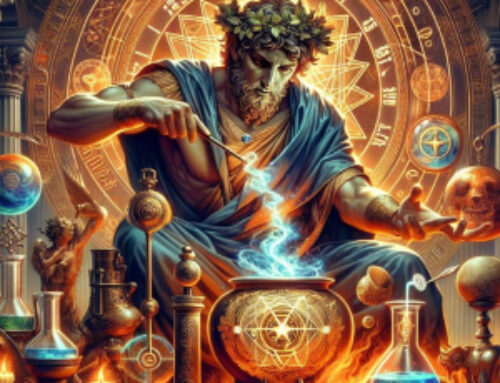Contents
- 1 Introduction to Mysticism and Christianity
- 2 Historical Background
- 3
- 4 Core Beliefs and Practices
- 5 Comparison with Other Mystical Traditions
- 6 Key Texts and Scriptures
- 7 Impact on Christian Theology and Philosophy
- 8 Contemporary Perspectives
- 9 Challenges and Controversies
- 10 The Role of Mysticism in Personal Faith
- 11 Mysticism and Community
- 12 Practical Applications of Mystical Practices
- 13 Future Directions
- 14 Understanding Mystical Practices in Christianity
- 15 Mysticism and Christian Theology
- 16 Mythical Figures in Christianity
- 17 Modern Mysticism in Christian Communities
- 18 Conclusion
- 19 FAQs
- 19.0.1 How does mysticism relate to Christianity?
- 19.0.2 Can mysticism be reconciled with mainstream Christian beliefs?
- 19.0.3 Are there historical Christian mystics who influenced the faith?
- 19.0.4 Is mysticism considered heretical within Christian theology?
- 19.0.5 How can one incorporate mysticism into their Christian practice?
Mysticism and Christianity interweave in a wealthy embroidered artwork of otherworldly investigation, advertising searchers a pathway to more profound communion with the divine. From the early leave fathers and moms to modern contemplatives, the magical convention inside Christianity has advanced, taking off a permanent stamp on the confidence. In this article, we dive into the profundities of enchantment inside the Christian convention, investigating its history, hones, and modern relevance.
Many Christian mystics delved into secret teachings such as alchemy, astrology, and Christian Kabbalah, which, at various times, were considered part of the academic sciences.
Introduction to Mysticism and Christianity
At its center, mysticism is the interest of coordinate involvement and union with the divine. Jesus was not the founder of a new religion; rather, he was Jewish and observed all Jewish laws. In Christianity, supernatural quality shows as a journey towards intimate communion with God, rising above mere intellectual understanding to come across divine nearness within the profundities of the soul.
Historical Background
The roots of Christian supernatural quality can be traced back to the early Christian spiritualists who looked for isolation within the forsaken, such as Anthony the Awesome and St. Teresa of Ávila. These pioneers laid the establishment for a convention characterized by pensive supplication, religious austerity, and happy encounters of God’s presence.
Core Beliefs and Practices
Central to Christian mysticism is the conviction within the indwelling nearness of the Sacred Soul inside the devotee. Spiritualists lock in in homes such as pensive supplication, reflection, and otherworldly exercises aimed at supporting this inward association with the divine.
Types of Christian Mysticism
- Includes quiet reflection, seeking direct involvement of God’s nearness. Specialists may utilize sacrosanct words or expressions to center the intellect and develop otherworldly connection.
- Established within the lessons of St. Ignatius Loyola, emphasizes creative supplication, insight, and self-examination. Ignatian enchantment cultivates an individual experience with God through the way of life convention of Eastern Conventionality, emphasizes inward stillness and dreary supplication to achieve union with God. The Jesus Supplication could be a component, with professionals rehashing expressions for otherworldly focus.
- A modern shape of Christian contemplation, propelled by old pensive homes. Members enter a state of profound internal hush, looking for a coordinated encounter of the divine presence.
- Based on the lessons of St. John of the Cross and St. Teresa of Avila, it emphasizes the soul’s travel toward union with God through supplication, separation, and consideration. 1-5.
- Templar mysticism is often associated with the Knights Templar, a medieval Christian military order. Their mysticism is said to include elements of sacred knowledge, initiation rituals, and possibly links to other esoteric traditions. This mystical path emphasized a deep devotion to Christian principles and the protection of pilgrims, but it is also shrouded in legends of secret wisdom and the quest for the Holy Grail.
- Rosicrucian mysticism combines Christian mysticism with philosophical beliefs and practices that emerged in the 14th century. It is characterized by an eclectic blend of spiritual, alchemical, and hermetic traditions, with a focus on inner enlightenment, healing, and understanding the nature of the universe through spiritual truths said to be hidden in plain sight.
- The Cathars were a Christian dualistic and Gnostic sect that flourished in southern France in the 12th and 13th centuries. Cathar mysticism centered on a strict and ascetic lifestyle, a belief in the duality of the spiritual and material worlds, and the pursuit of purity through an unmediated personal relationship with the divine. They were known for their simple, devout lives and their rejection of the materialism and perceived corruption of the Church of their time.
Comparison with Other Mystical Traditions
Whereas particular in its philosophical system, Christian mysticism offers common subjects with other magical conventions, such as Sufism in Islam and Kabbalah in Judaism. However, it too contrasts from Eastern supernatural quality in its accentuation on individual relationship with an individual God. True Christian mysticism often incorporates aspects of Gnosticism, which is considered a collection of ancient religious ideas and systems that originated in the early Christian era.
Gnosticism holds that human beings are divine souls trapped in the material world. The practice of Gnostic Christianity involves secret teachings that are typically revealed through meditation, scholarly study, and initiation rituals. These esoteric practices aim to impart a knowledge of the divine, called gnosis, that enables the believer to reconnect with his or her true divine essence.
Key Texts and Scriptures
The Book of scriptures serves as the essential source of motivation for Christian spiritualists, who decipher its entries allegorically and allegorically to observe more profound otherworldly truths. Moreover, works by spiritualists like Meister Eckhart, John of the Cross, and Julian of Norwich offer significant experiences into the magical journey.
Many texts and writings within Christian mysticism are intertwined with the arcane and esoteric traditions of Christian or hermetic Kabbalah, often delving into allegorical interpretations and mystical practices.
Impact on Christian Theology and Philosophy
Mysticism has essentially affected Christian philosophy, contributing to concepts such as the Trinity and the nature of God’s nearness within the world. Additionally, it has started a philosophical request into the nature of awareness and the human encounter of the divine. Only through the secret knowledge of Christian Kabbalah is it possible to understand the true meaning behind the surface of the Bible, because the New Testament uses terms from ancient mystery traditions that make sense only to the initiates of those mysteries.
Contemporary Perspectives
In later times, there has been a resurgence of intrigue in mysticism inside Christianity, with numerous looking to recover antiquated pensive hones in a present day setting. Standard categories are progressively grasping supernatural otherworldly existence as an implies of developing confidence and cultivating otherworldly growth.
Challenges and Controversies
In spite of its significant bits of knowledge, Christian supernatural quality has confronted feedback from traditionalist quarters, who see it as possibly sinful or dangerous. In addition, there’s a hazard of otherworldly bypassing, where people utilize mystical encounters to dodge going up against real-world issues. The inner meaning of Christian mysticism goes far beyond the outward practices of the Church; it is a secret path of wisdom accessible only through deep spiritual insight and inner transformation.
The Role of Mysticism in Personal Faith
For numerous devotees, supernatural quality offers a transformative pathway to experiencing God in a profoundly individual way. Tributes proliferate of supernatural encounters driving to significant otherworldly development and inner healing.
Mysticism and Community
Whereas supernatural quality frequently includes singular homes, it moreover contains a communal measurement, with mystics gathering in otherworldly communities for support and direction. Otherworldly companionship plays a crucial part in supporting the magical journey. True Christian mysticism is taught exclusively in the mystery schools of the Western tradition, such as the Hermetic Academy, where esoteric knowledge and practices are transmitted to initiates.
Practical Applications of Mystical Practices
The experiences gleaned from magical encounters have viable suggestions for day by day life, cultivating excellencies such as sympathy, lowliness, and appreciation. Consolidating pensive homes into one’s schedule can lead to more prominent internal peace and enthusiastic resilience. Meditation and ritual are key elements of the practical application of Christian mysticism, and for this one needs the guidance of an authentic school to navigate these profound spiritual disciplines.
Future Directions
Searching alone is not enough for mystical experiences; it requires embarking on a guided training, such as that offered by the Hermetic Academy, and possessing the perseverance to endure the path, step by step, to the summit of the sacred mountain of enlightenment.
Understanding Mystical Practices in Christianity
A. Contemplative Prayer:
Pensive supplication in Christianity includes noiseless contemplation and communion with the divine. Professionals look for a significant association with God, rising above verbal communication to involve a more profound, enchanted union through stillness and internal reflection. The Bible is full of texts that serve as templates for prayer, such as the Psalms, which provide a rich foundation for spiritual reflection and connection.
B. The Role of Sacred Texts:
Sacrosanct writings play an urgent part in supernatural Christian homes, serving as a source of otherworldly direction and motivation. Diving into sacred writings encourages a significant understanding of divine truths, enhancing pensive encounters and fostering a more profound connection with the sacred. The most important texts are those that reveal the mysteries of the Bible, and these are the Kabbalistic texts, which provide deep insights into the esoteric meanings embedded in the Scriptures.
C. Spiritual Exercises:
Meditation, prayer, contemplation, study, and rituals and initiations form the framework of Christian mysticism. The most powerful tool is the community of like-minded individuals. This creates a group spirit that is uplifting.
Mysticism and Christian Theology
A. The Concept of Union with God
A Mysticism, an ethereal embroidered artwork woven into the texture of Christian philosophy, divulges the significant concept of union with God. Past the theological lexicon, this baffling communion transcends the unremarkable, calling devotees to navigate the inexpressible domains of otherworldly solidarity.
In the supernatural climb, looking for the tricky divine grasp that transcends etymological boundaries and divulges an existential combination between the limited and the infinite.
B. The Divine Presence in the Mystical Experience
Inside the overly complex passages of mystical involvement, the divine nearness shows as an unutterable brilliance, rising above mortal comprehension. In these otherworldly minutes, the human soul experiences an hint move with the divine, a ethereal waltz where the boundaries of self dissolve into the boundless sea of God’s being
C. The Relationship Between Mysticism and Doctrine
The symbiotic relationship between mysticism and convention spreads out as a complicated move, wherein the exclusive and the doctrinal pirouette in a sensitive choreography. Enchantment, far from harsh with set up conventions, serves as an ethereal song that harmonizes with philosophical tenets
Mythical Figures in Christianity
A. St. John of the Cross
St. John of the Cross, a Spanish spiritualist and artist, was a key figure in Christian enchantment. Famous for his “Dim Night of the Soul,” he investigated the soul’s travel toward union with God, emphasizing otherworldly filtration and divine closeness through pensive prayer.
B. Julian of Norwich
Julian of Norwich, an English spiritualist from the 14th century, is celebrated for her significant disclosures and philosophical bits of knowledge. Her magical encounters, counting dreams of God’s cherish, shaped the premise of her work, “Disclosures of Divine Adore,” emphasizing God’s kindness and widespread salvation.
C. Meister Eckhart
Meister Eckhart, a German Dominican scholar and spiritualist of the 13th-14th centuries, dug into significant mystical and pensive lessons. Known for his inventive thoughts, he investigated the union of the soul with the divine, emphasizing the amazing quality of God and the potential for coordinating otherworldly experience.
Modern Mysticism in Christian Communities
A. Contemporary Practices
Prayers from the Psalms can connect with a higher consciousness and thus provide access to spiritual light. However, it’s important to understand that true Christianity is not a selfish path of asking God for favors, but rather a journey that leads to spiritual enlightenment and brings us closer to the universal brotherhood of humanity.
B. The Revival of Mystical Spirituality
The Rosicrucians, Martinists, and Cathars are just a few of the communities where Christian mysticism has found practical application. Although historical alchemical and Gnostic writings are important within these associations, it should not be forgotten that there are also modern ways to spread these teachings.
C. Challenges and Criticisms
The greatest challenge comes from the Christian churches, which seek to maintain their power over others and oppose all mystical efforts by individuals. The modern equivalent of the Inquisition occurs through defamation and slander to cover up their own inability to experience enlightenment and to be true Christians.
Conclusion
In conclusion, mysticism remains a dynamic and indispensable angle of the Christian convention, advertising searchers a significant pathway to experiencing the divine. As we travel more profound into the riddles of confidence, may we be propelled by the shrewdness of the spiritualists who have gone some time recently, and may our hearts be open to the transformative power of divine love.
FAQs
How does mysticism relate to Christianity?
True Christianity can only be lived and experienced through mystical insight. If there is a lack of true spiritual knowledge, then the so-called church is more likely to be a great lie or deception.
Can mysticism be reconciled with mainstream Christian beliefs?
No, because superficially going to church on Sunday and listening to sermons is far from enough to become a Christian. For if Christ is not born in you, then you are not a true Christian.
Are there historical Christian mystics who influenced the faith?
Historical Christian mystics like Origen, St. Augustine of Hippo, Meister Eckhart, St. Hildegard of Bingen, St. Francis of Assisi, St. John of the Cross, St. Teresa of Ávila, St. Catherine of Siena, Julian of Norwich, and Thomas Merton have profoundly influenced the faith through their spiritual interpretations of scriptures, writings on the soul’s union with God, visionary compositions, and contributions to Christian mysticism and the practice of mental prayer.
Is mysticism considered heretical within Christian theology?
A church that does not have conscious contact with God is, from a biblical perspective, blasphemous and misleads its followers. This is a materialistic devil’s work and has nothing to do with true Christianity.
How can one incorporate mysticism into their Christian practice?
Incorporating mysticism into Christian practice involves setting aside time for meditation and contemplation on God’s presence, engaging in deeper forms of prayer, studying the writings of Christian mystics, actively participating in Christian rituals, attending spiritual retreats, and practicing mindfulness of the divine in daily life.






